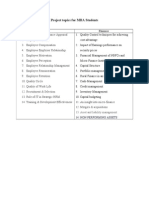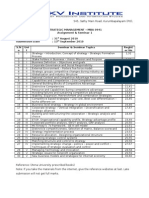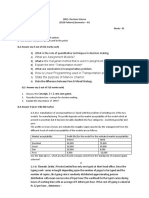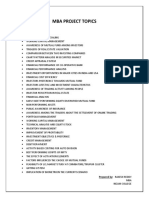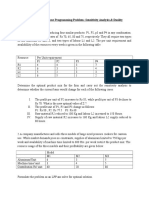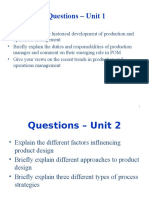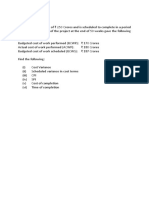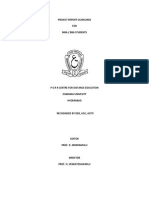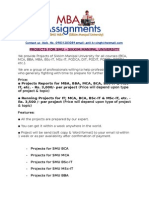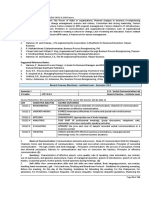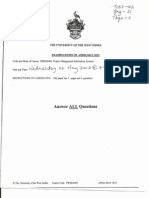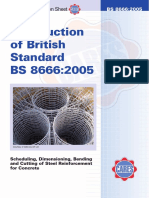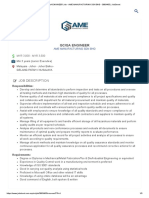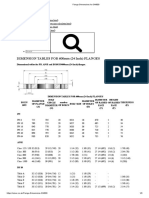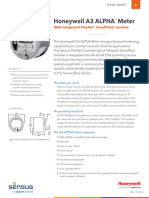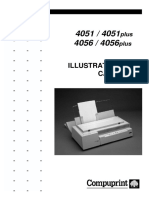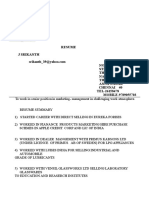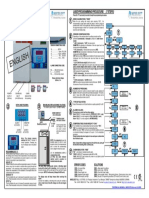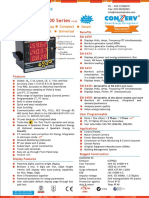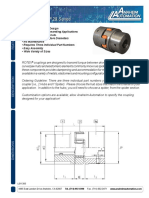100% found this document useful (1 vote)
5K views45 pagesMBA Project Management Sample Question Paper
The document appears to be an exam for an MBA program covering several topics:
1. There are multiple choice and long answer questions covering management concepts, organizational behavior, managerial economics, quantitative methods, and business laws.
2. The exam is divided into two sections for each topic - a short answer section worth 40 marks and a long answer section worth 60 marks.
3. The management concepts section includes questions about defining management, planning, contributions of Taylor, principles of organization, and motivation. The organizational behavior section covers topics like personality, groups, leadership, and communication.
Uploaded by
OsthePrakashCopyright
© © All Rights Reserved
We take content rights seriously. If you suspect this is your content, claim it here.
Available Formats
Download as PDF, TXT or read online on Scribd
100% found this document useful (1 vote)
5K views45 pagesMBA Project Management Sample Question Paper
The document appears to be an exam for an MBA program covering several topics:
1. There are multiple choice and long answer questions covering management concepts, organizational behavior, managerial economics, quantitative methods, and business laws.
2. The exam is divided into two sections for each topic - a short answer section worth 40 marks and a long answer section worth 60 marks.
3. The management concepts section includes questions about defining management, planning, contributions of Taylor, principles of organization, and motivation. The organizational behavior section covers topics like personality, groups, leadership, and communication.
Uploaded by
OsthePrakashCopyright
© © All Rights Reserved
We take content rights seriously. If you suspect this is your content, claim it here.
Available Formats
Download as PDF, TXT or read online on Scribd
/ 45




